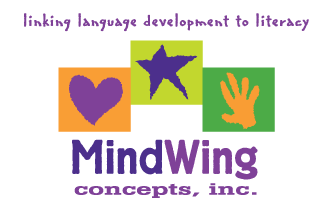Secure Checkout. FREE SHIPPING for Continental U.S. Orders over $60.
Menu
-
- Home
-
About Us
-
The Approach
-
Linking Language & Literacy
-
MindWing Learning
-
Learning Resources
-
SHOP
-
Blog
-
- About MindWing
- Our People
- Contact Us
- Your Account
- Login
-
United States (USD $)

Secure Checkout. FREE SHIPPING for Continental U.S. Orders over $60.
MindWing Concepts Blog

Tool Tuesday: ReVISITING Google Earth
September 30, 2024

Tool Tuesday: Summer Study Series Part 4—“A Recent Look at Evidence-Based Expository Intervention”
August 26, 2024

Tool Tuesday: Summer Study Series Part 3—Considering Narrative and Neurodiversity
July 30, 2024

Tool Tuesday: Summer Study Series Part 2— “Ideas on Scaffolding Play through Narratives”
June 24, 2024

Tool Tuesday: Summer Study Series Part 1— “Translating MindWing’s Approaches to Older Students”
May 28, 2024

Tool Tuesday: ESCAPE!
April 29, 2024
